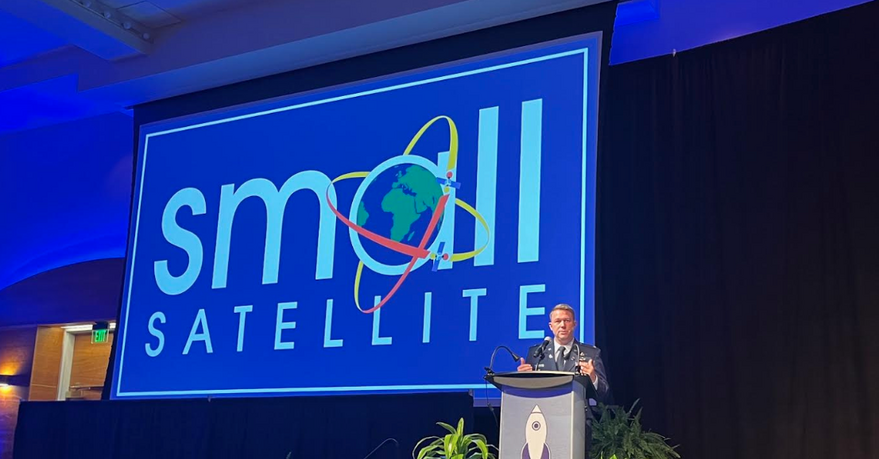LOGAN, Utah – The National Reconnaissance Office is eager to work with partners who are developing advanced technology for satellites and ground systems.
“We’re eager to collaborate with industry and academia in advancing these capabilities and expanding our future architecture,” U.S. Space Force Col. Matt Allen, NRO Advanced Systems and Technology (AS&T) deputy director, said Aug. 8 at the Small Satellite Conference here. “Industry partners are crucial to our mission. As the marketplace continues to grow and competition intensifies and innovation accelerates, AS&T strategies are designed to capitalize on that and support our mission by speeding up the technology development and integration of enabling next-generation capabilities and exploring revolutionary and disruptive technologies.”
Evolutionary Improvements
In terms of evolutionary improvements, the NRO is “investing in radiation-tolerant and radiation-hardened microelectronics, which absolutely advantage the National Reconnaissance Office but also have advantages to the DOD, to civil space applications and to commercial applications,” Allen said.
NRO is eager to identify materials that will reduce spacecraft mass or improve performance, “so that when it comes time for us to build our next-generation architectures, our program officers can work with industry, academia and other mission partners and labs to make sure that they’re ready for the mission,” Allen said.
Revolutionary Capabilities
The NRO also is funding basic research that promises “to give us that undeniable advantage over our adversaries or give us that economic boost as a nation or give us an advantage to get our mission done better in a way that we never thought was possible,” Allen said.
Within AS&T, NRO officials look for ways to accelerate the maturation and adoption of revolutionary technologies.
AS&T works with “academic institutions, national labs, Department of Defense labs and international partners to do basic research, to cast a wide net to find some of those new technologies that allow us to do our mission better to provide intelligence,” Allen said.
Quadrupling the Constellation
The NRO designs, builds, launches and operates spy satellites for the U.S. government. In recent years, the agency has supplemented its own intelligence-gathering capabilities with commercial satellite imagery and data.
“NRO is building the largest and most capable overhead constellation in its history, with the number of satellites on orbit expected to quadruple by the end of the decade,” the agency said in an Aug. 8 news release.
GoliathSat
In the last decade, “the smallsat community has transformed space,” Allen said. “You’ve been able to pack more and more capability in smaller form factors.”
That success has prompted the NRO to adopt a hybrid architecture designed to take advantage of the strengths of both the government and commercial sectors.
“The architecture that we’re buying here must be flexible, adaptive, agile, interoperable,” Allen said. “The goal is to integrate commercial, allied and Defense Department capabilities with NRO’s own systems to expand our worldwide coverage and capacity, increase persistence, enhance resiliency, improve products at the pace of commercial advancements and assure routine and reliable access to space.”
